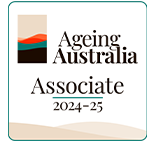
Inspiring young people to develop their careers within aged care
August 28, 2019
Research grants open for nurses and midwives ‘at the bedside’
September 10, 2019Australia moves to new assessment model for international nurses

Medical team at a hospital
Australia moves to new assessment model for international nurses.
Nurses and midwives with international qualifications arriving in Australia will be offered the choice of either a bridging course or OBA to register in Australia from October 1, 2019.
A year after the Nursing and Midwifery Board of Australia (NMBA) announced the introduction of a new assessment model for internationally qualified nurses and midwives to attain registration in the country, the board has declared that the new system will come into effect from October 1 this year.
At present, internationally qualified nurses and midwives (IQNMs) who arrive in Australia holding qualifications which are relevant but not substantially equivalent to the Australian qualifications have to undergo a bridging program to attain the registration required to work in the country.
However from next month NMBA will introduce a new assessment model giving candidates the option to choose between the bridging course and the outcomes-based-assessment (OBA) which will be available from January 2020.
“The new model known as outcomes-based-assessment (OBA) will commence in January 2020,” the NMBA said in a statement.
“From January 2020, all IQNMs with relevant but not substantially equivalent qualifications will be referred to the OBA,” the statement reads. There will not be any new referrals to the bridging program from next year.
“The priority of the assessment model is public safety and ensuring that all individuals registered as a nurse or midwife in Australia are meeting the same standards, regardless of where they gained their qualifications,” an NMBA spokesperson tells SBS Malayalam.
“Since 2014, IQNMs wanting to register in Australia have been assessed under an interim model of assessment, while the Board undertook an extensive research project to develop a permanent model of assessment. The new model of assessment is based on the recommendations of that research and international best practice,” NMBA added.
From the October 1, IQNMs who arrive in Australia will be offered to opt-out either the bridging course or OBA to work in the country. But those applying from the January 1 2020, will not be offered the choice of two models.
Those applying from January 1 2020 will only be able to choose OBA, as this will completely replace the current bridging course from 2021.
“Bridging programs are expected to continue until 2021, for IQNMs who hold a referral to bridging. IQNMs will no longer be referred to bridging programs from January 2020,” reads the statement from NMBA.
What is OBA?
The outcomes-based-assessment model or OBA that will replace the bridging course consists of two parts. This includes a multiple-choice exam, followed by an objective structured clinical exam (OSCE), which is currently implemented in many countries.
While the first part is a computer-based multiple-choice cognitive assessment, the second part is behavioural assessment in the form of an objective structured clinical examination (OSCE).
Those applicants who pass the first stage will be able to go through to the second part of the OBA.
Objective structured clinical examination (OSCE)
According to NMBA, the OSCE is used to assess whether an IQNM possesses the knowledge, skills and competence of a graduate-level Australian nurse or midwife.
“OSCE implemented in many countries including the United Kingdom is basically to assess how a nurse or midwife can handle the patients in different scenarios in a simulation environment,” Kunnumpurathu Bijo, the CEO of Melbourne based Institute of Health and Management, tells SBS Malayalam.
“In the OSCE implemented in the UK the IQNMs need to demonstrate their skills in handling a patient in that country, in the presence of a clinical educator who observes them. It covers every aspect, like their communication to the patient, clinical decision making and practice standards,” says Mr. Bijio.
“However, in the UK, OSCE can only be attempted three times and needs proper training to crack it,” adds Bijo.
Orientation to be completed
Once the two-stage assessment process is completed, all IQNMs will also be required to complete an orientation program consisting of three stages.
While stage one is an online assessment to introduce IQNMs to Australia and the Australian healthcare system, stage two covers the diversity of Australian culture. This will be completed once the IQNMs are registered with the NMBA.
The third stage of the orientation program will be provided by the IQNM’s employer, based on NMBA guidelines.
“All the nurses and midwives arriving in Australia will have to complete this orientation program from next year,” says Jaison Thomas an Education Consultant at Sanjose Consultacy in Melbourne to SBS Malayalam.
“The new model is expected to benefit the applicants financially as the adaptation program in Australia is very expensive now when compared to other countries,” he adds.
This article was originally published on SBS Malayalam at www.sbs.com.au on 9/9/19 by Salvi Manish.










